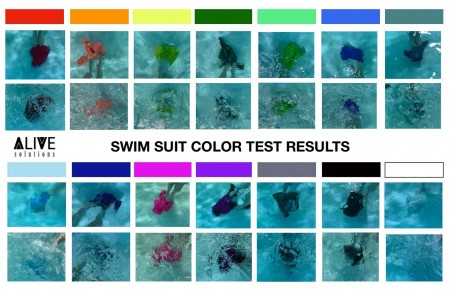Six Tips to be an Empowered Water-Safe Adult!
Posted March 08, 2023As pool season in Jacksonville quickly approaches, now is a great time to refresh on pool safety-for yourself and for your swimmers. One of the most important steps to prepare for safety this pool season begins with you! It is crucial to remember: even with the best setup, the best resources, and having strong swimmers in your home, water emergencies and drowning can happen to anyone. Ignorance is NOT bliss, and knowledge IS power! Furthermore, drowning is the number one leading cause of preventable death in children. Our mission is to partner with you and your family to give you practical skills and resources to empower you and your family for a fun (and safe) pool season. We don’t ever want your children to be a statistic! The first thing a prepared adult does is acknowledge the simple truth: you can never be prepared enough. If you believe “this will never happen to me” you might be less vigilant in overseeing your swimmers. This could make you less likely to act, prepare, or pay attention in or around the pool.
1- “It can always happen to me”
When it comes to pool and water safety, ignorance is NOT bliss, and knowledge IS power. The best way to anticipate and prepare for any situation is to be equipped with practical tools to prevent accidents and maintain body safety. While it may be tempting to put off planning for emergencies, remember: The first step to being truly prepared is to acknowledge even with the best setups and resources- it can still happen to you. Believing “this will never happen to me” could result in decreased vigilance, and might result in delayed reactions, limited preparation, or lapses in paying attention to your young swimmers.
2- To reach or not to reach- the temptation of pool toys
Toys thrown into the water (or that have fallen in by accident) quickly float just out of reach of small arms and are a very tempting danger to children. Kids- especially toddlers- will often try to reach out to grab for things they see in the pool. However, they are still developing body awareness, balance, and depth perception, and may not be aware of their limitations or recognize the danger reaching for toys can pose. Teaching starts outside of the pool! Have intentional and regular conversations with your kids to introduce problem solving tools, and regularly provide opportunities to practice self-awareness. And remember: Always remove pool toys after use! If a child does end up near the water without supervision, they will not be tempted to reach for toys if they are looking at an empty pool. Pool safety includes having many layers of protection!
3- What is Suction Entrapment?
Suction entrapment is when strong suction from filters or drains catches long hair or body parts, and the person is unable to pull free. Make sure all your drain covers are fully intact and unbroken. If they are not, immediately close the pool until it’s fixed. Educate your children to stay away from drains and filters even when they are intact, and continue having conversations about body safety in the pool. A good phrase to introduce during intentional teaching moments is “is this a tool or a toy?” Teach your swimmers the function of a tool, what purpose they serve, and why a tool isn’t a toy! Education and information are power, even to our youngest swimmers.

4- Are your swimmers invisible underwater? Did you know the color of your child’s swimsuit could be the difference between life and death? Not all colors are easy to see underwater, and can actually make your child very difficult to find! Remember: even a couple extra seconds can make a huge difference in saving a life. As you can see in the Aquatic Safety Solutions pictures depicted (below), neon pink and neon orange colors stand out the most, while other colors like white and light blue are almost impossible to see. Consider buying swimsuits in colors that are bright and stand out clearly in a pool so you can easily identify your child- in and out of the water!
5- Movies versus reality: drowning
Have you ever seen a movie depicting a drowning person? Usually, what you see is screaming and thrashing around, everyone is watching, and someone jumps in and heroically saves them…it makes for an emotional cinematic moment! However, when a person is truly in danger, drowning is silent. This is especially true for toddlers or infants, as it can take a small child as little as 20 seconds to drown. Generally, this is because they have not learned how to hold their breath, and have no experience underwater- they are unable to thrash, yell, jump up, or visibly struggle before sinking. Remember: after four minutes of oxygen deprivation, brain damage begins to occur. Avoid playing any games like “holding breath challenges”, “hide and go seek”, or chasing games in or around the pool, and start those safety conversations early!
6- “Your Pool” “My Pool”
Always verbalize and create an action plan with the adults who are on watching duty; never assume someone else is paying attention. A simple way to accomplish this is to create a simple phrase or code word that everyone knows and understands. This conversation should be had before arriving at the pool. These words or phrases become critical when it’s time for a new adult to take responsibility as the pool watcher. The primary goal is to achieve verbal and intentional confirmation for the exchange of responsibility. Consider using the phrase “your pool” and wait for the response “my pool” before leaving the pool area, relaxing on your phone, or just enjoying the pool yourself.